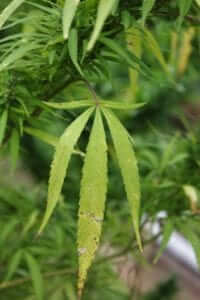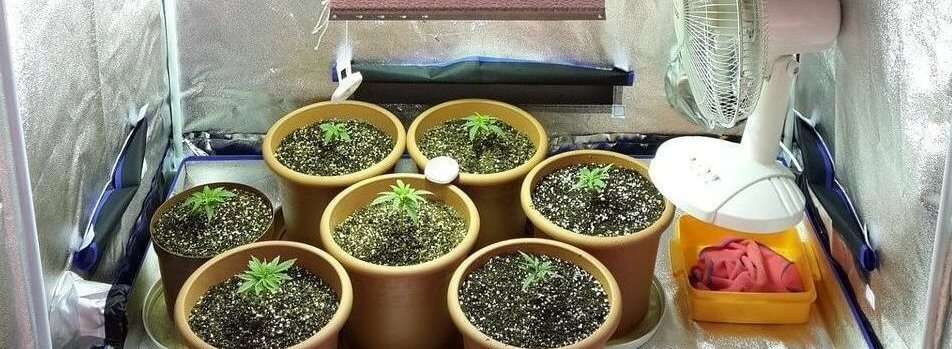
Hop Latent Viroid (HpLVd) is a plant disease affecting marijuana plants that is spreading throughout the USA. Before you panic, let’s make it clear that viroids are not viruses but, rather, a plant-specific pathogenic RNA.
With an increasing number of growers, following legalization in several states, it is thought that many have begun to propagate their own strains rather than purchasing seeds to grow new plants. Propagation is clearly less expensive than buying new seeds but it does bring its own risks.
HpLVd causes “dudding” – stunted growth, lack of trichomes, and a lack of secondary metabolites such as cannabinoids and terpenes.
The cause is thought to be related to the failure to implement aggressive sanitation and quarantine protocols, and the lack of proper quarantine and inspection of new varieties as growers add to their production can open an entire production system to infection.
In the case of HpLVd, the mechanical spread through tools and gloves is believed to be its major mode of transmission.
While it is common in the cannabis industry to use 70% isopropanol/ethanol for tool sanitation, the horticulture and agriculture industries determined through research that bleach, a 10% household bleach solution, is the most effective and simplest way to stay clean.
The biggest challenge in controlling hop latent viroid is the “latent” nature of the viroid. It is possible for the pathogen to enter a production system and spread quietly while never showing any symptoms. There are instances where plants can test positive but show no symptoms, even over time. This makes it difficult for growers to quantify the problems associated with the viroid infection, and any visible effects of the infection may well be blamed on genetics, fertility, or insect/spray damage.
What often happens is a secondary stress occurs (heat/nutritional/pest) during vegetative growth and flowering, at which point 10%-30% of a crop can be lost to “dudding.”
Mother stock
The practice of keeping mother stock for long periods of time, and continuously propagating from the previous generation’s cuttings, also can be problematic.
Diseases can most certainly be harbored in poorly maintained mother rooms. If you propagate marijuana plants the most important aspect, in preparation for the 2021 season, is to access pathogen-tested young plants from tested mother stock.
In addition to concerns such as botrytis, powdery mildew, fusarium, and other common cannabis diseases, hop latent viroid is a threat that must be tested for. One issue with large mother plants is that separate parts of a large plant can test positive and negative, as the viroid is not evenly distributed throughout the plant. That means infected plants can test negative in one test and then test positive several months later.
How to Test
To test for hop latent viroid, breeders can look to polymerase chain reaction (PCR), a molecular biology technique that is able to detect the presence or absence of a specific sequence of DNA or RNA in a sample. You can take known sequences of viruses and viroids and design PCR methods to detect them in plants. Best, of course, carried out in a laboratory specializing in plant diseases.
However, the PCR methods used for viroid identification are not standardized, and some PCR methods are more sensitive than others.
The bottom line, without a doubt, is sanitation. One that encompasses tool sanitation, grow sanitation, and personnel sanitation. Or bite the bullet and buy seeds from a reputable seedsman.





